
Folklore is the body of culture shared by a particular group of people; it encompasses the traditions common to that culture, subculture or group. This includes oral traditions such as tales, legends, proverbs and jokes. They include material culture, ranging from traditional building styles to handmade toys common to the group. Folklore also includes customary lore, taking actions for folk beliefs, the forms and rituals of celebrations such as Christmas and weddings, folk dances and initiation rites. Each one of these, either singly or in combination, is considered a folklore artifact. Just as essential as the form, folklore also encompasses the transmission of these artifacts from one region to another or from one generation to the next. Folklore is not something one can typically gain in a formal school curriculum or study in the fine arts. Instead, these traditions are passed along informally from one individual to another either through verbal instruction or demonstration. The academic study of folklore is called folklore studies or folkloristics, and it can be explored at undergraduate, graduate and Ph.D. levels.

In folklore, a will-o'-the-wisp, will-o'-wisp or ignis fatuus, is an atmospheric ghost light seen by travellers at night, especially over bogs, swamps or marshes. The phenomenon is known in English folk belief, English folklore and much of European folklore by a variety of names, including jack-o'-lantern, friar's lantern, hinkypunk and hobby lantern and is said to mislead travellers by resembling a flickering lamp or lantern. In literature, will-o'-the-wisp metaphorically refers to a hope or goal that leads one on but is impossible to reach or something one finds strange or sinister.
Japanese folktales are an important cultural aspect of Japan. In commonplace usage, they signify a certain set of well-known classic tales, with a vague distinction of whether they fit the rigorous definition of "folktale" or not among various types of folklore. The admixed impostors are literate written pieces, dating back to the Muromachi period or even earlier times in the Middle Ages. These would not normally qualify for the English description "folktales".
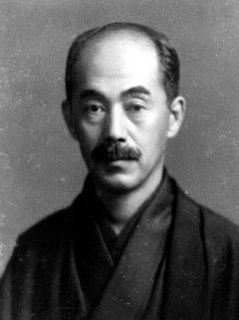
Kunio Yanagita was a Japanese author, scholar, and folklorist. He began his career as a bureaucrat, but developed an interest in rural Japan and its folk traditions. This led to a change in his career. His pursuit of this led to his eventual establishment of Japanese native folkloristics, or minzokugaku, as an academic field in Japan. As a result, he is often considered to be the father of modern Japanese folklore studies.

A kappa—also known as kawatarō, komahiki, kawatora or suiko–is an amphibious yōkai found in traditional Japanese folklore. They are typically depicted as green, human-like beings with webbed hands and feet and a turtle-like carapace on their back.
The vanishing hitchhiker is an urban legend in which people travelling by vehicle, meet with or are accompanied by a hitchhiker who subsequently vanishes without explanation, often from a moving vehicle.
The redcap is a type of malevolent, murderous goblin found in Border folklore. He is said to inhabit ruined castles along the Anglo-Scottish border, especially those that were the scenes of tyranny or wicked deeds and is known for soaking his cap in the blood of his victims. He is also known as Redcomb and Bloody Cap.
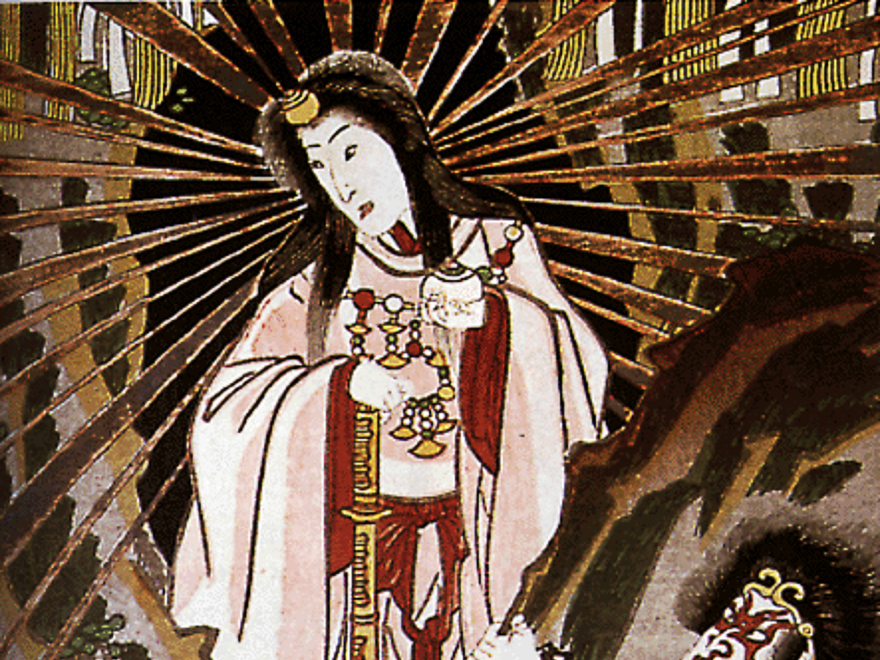
Yūrei are figures in Japanese folklore analogous to the Western model of ghosts. The name consists of two kanji, 幽 (yū), meaning "faint" or "dim" and 霊 (rei), meaning "soul" or "spirit". Alternative names include 亡霊, meaning ruined or departed spirit, 死霊 meaning dead spirit, or the more encompassing 妖怪 or お化け. Like their Chinese and Western counterparts, they are thought to be spirits barred from a peaceful afterlife.

Irish folklore refers to the folktales, balladry, music, dance, and so forth, ultimately, all of folk culture.
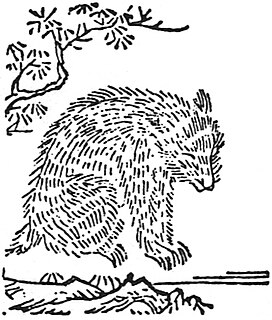
Mujina is an old Japanese term primarily referring to the Japanese badger, but traditionally to the Japanese raccoon dog (tanuki), causing confusion. Adding to the confusion, it may also refer to the introduced masked palm civet, and in some regions badger-like animals or Japanese raccoon dog are also called mami.
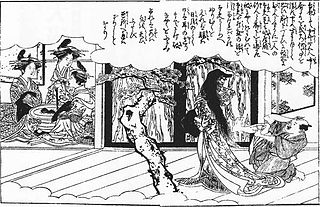
Kuchisake-onna is a malevolent figure in Japanese urban legends and folklore. Described as the malicious spirit, or onryō, of a woman, she partially covers her face with a mask or other item and carries some sort of sharp object. She is most often described as having long, straight, black hair, pale skin, and otherwise being considered beautiful . She has been described as a contemporary yōkai.
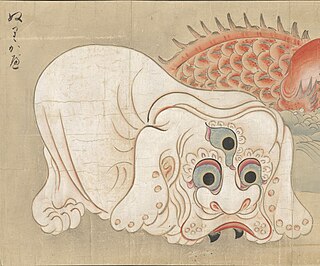
The nurikabe is a yōkai, or spirit, from Japanese folklore. Its name translates to "plaster wall", and it is said to manifest as an invisible wall that impedes or misdirects travelers walking at night. Sometimes referred to in English as "The Wall" or "Mr. Wall", this yōkai is described as quite tall, to prevent people from climbing over it, and wide enough to dampen any attempts to go around it. Japanese scholar and folklorist Kunio Yanagita recorded perhaps the most prominent early example of nurikabe and other yōkai in his books. Manga artist Mizuki Shigeru claims to have encountered a nurikabe in New Guinea, inspiring a nurikabe character in his manga Gegege no Kitarō.
Joseph A. Citro is a Vermont author and folklorist. Occasionally referred as the "Bard of the Bizarre" or "the Ghost-Master General", he has extensively researched and documented the folklore, hauntings, ghost stories, paranormal activity and occult happenings of New England.
The Maco Light was a supposedly anomalous light, or "ghost light", occasionally seen between the late 19th century and 1977 along a section of railroad track near the unincorporated community of Maco Station, North Carolina. Said to resemble the glow from a railroad lantern, the light was associated with a folk tale describing a fatal accident, which may have inspired tales of a similar type around the country.
The term yamabito (山人) or sanjin, as understood in Japanese folklore, has come to be applied to a group, some scholars claim, of ancient, marginalized people, dating back to some unknown date during the Jōmon period of the history of Japan.
Hanako-san, or Toire no Hanako-san, is a Japanese urban legend about the spirit of a young girl named Hanako-san who haunts school toilets. Like many urban legends, the details of the origins of the legend vary depending on the account; different versions of the story include that Hanako-san is the ghost of a World War II–era girl who was killed while playing hide-and-seek during an air raid, that she was murdered by a parent or stranger, or that she committed suicide in a school toilet.
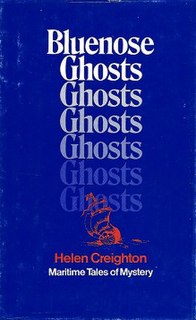
Bluenose Ghosts is a book which presents a series of Nova Scotia ghost stories collected by Canadian folklorist Helen Creighton over a period of 28 years, first published in 1957.

In Canadian ghostlore, the Ghost Ship of Northumberland Strait is a ghost ship said to sail ablaze within the Northumberland Strait, the body of water that separates Prince Edward Island from Nova Scotia and New Brunswick in eastern Canada.

Canadian folklore is the traditional material that Canadians pass down from generation to generation, either as oral literature or "by custom or practice". It includes songs, legends, jokes, rhymes, proverbs, weather lore, superstitions, and practices such as traditional food-making and craft-making. The largest bodies of folklore in Canada belong to the aboriginal and French-Canadian cultures. English-Canadian folklore and the folklore of recent immigrant groups have added to the country's folk.










